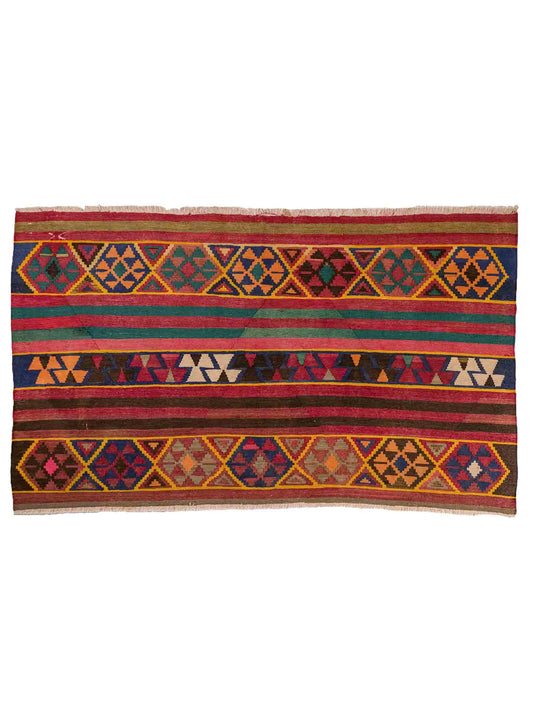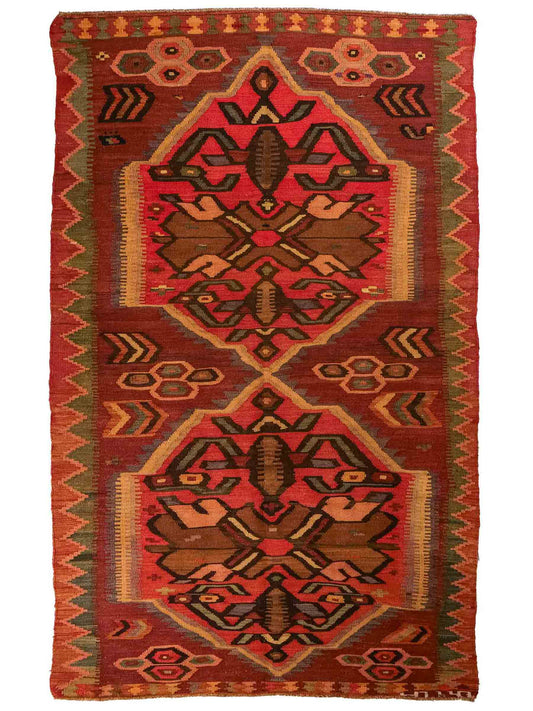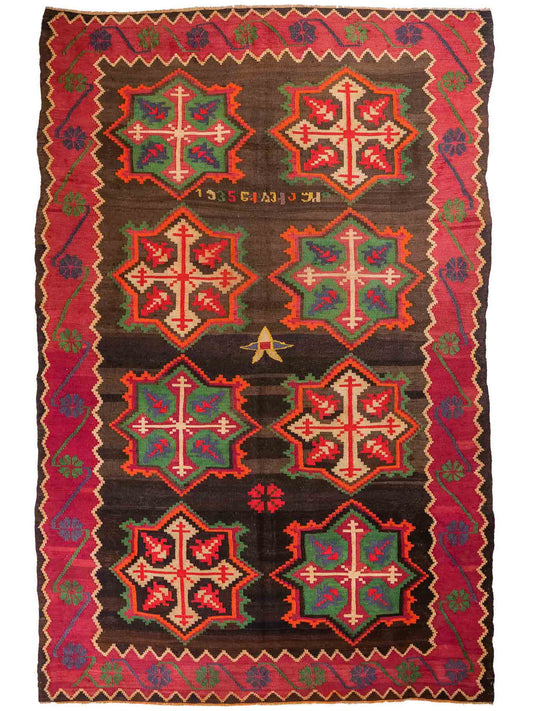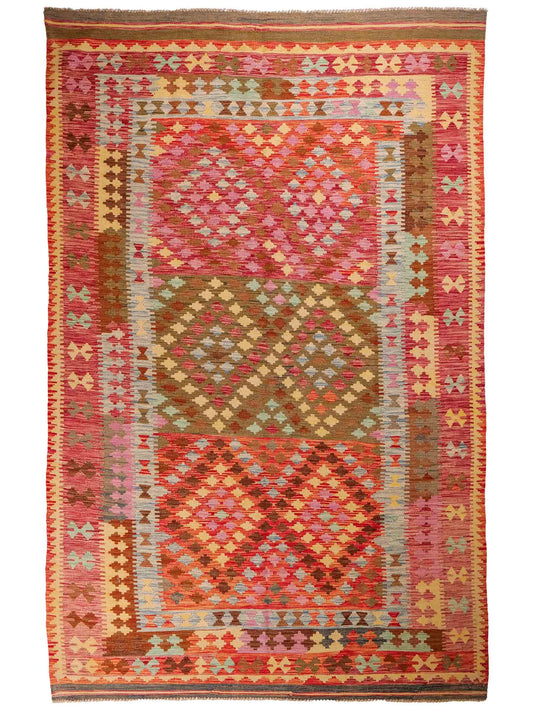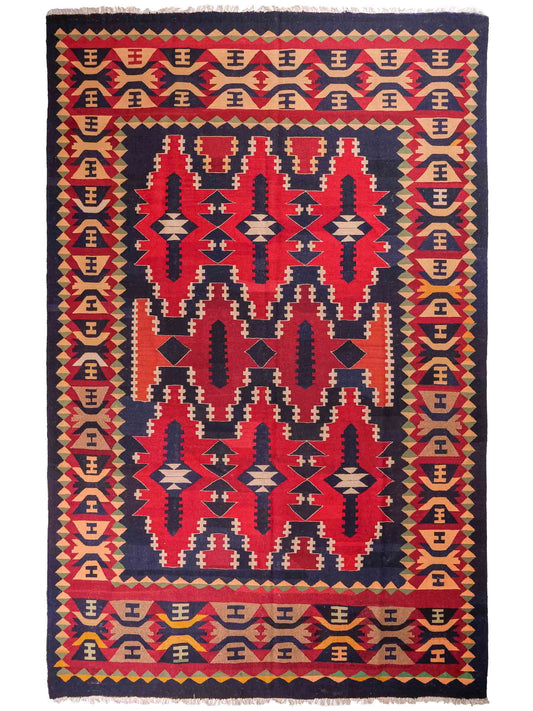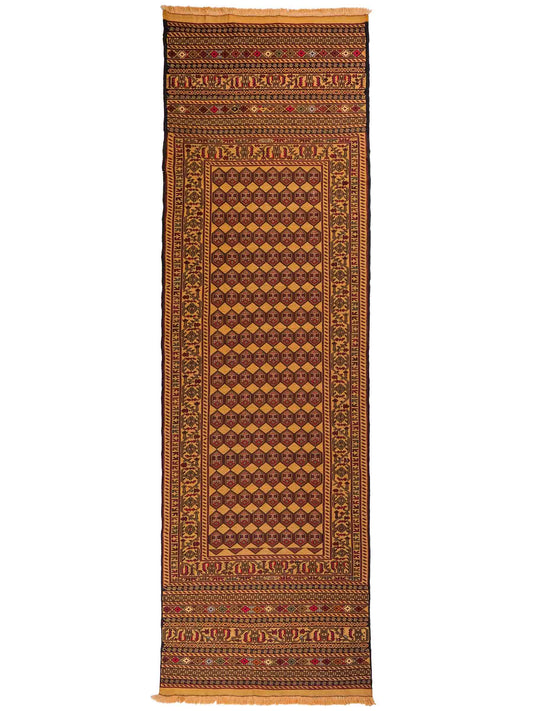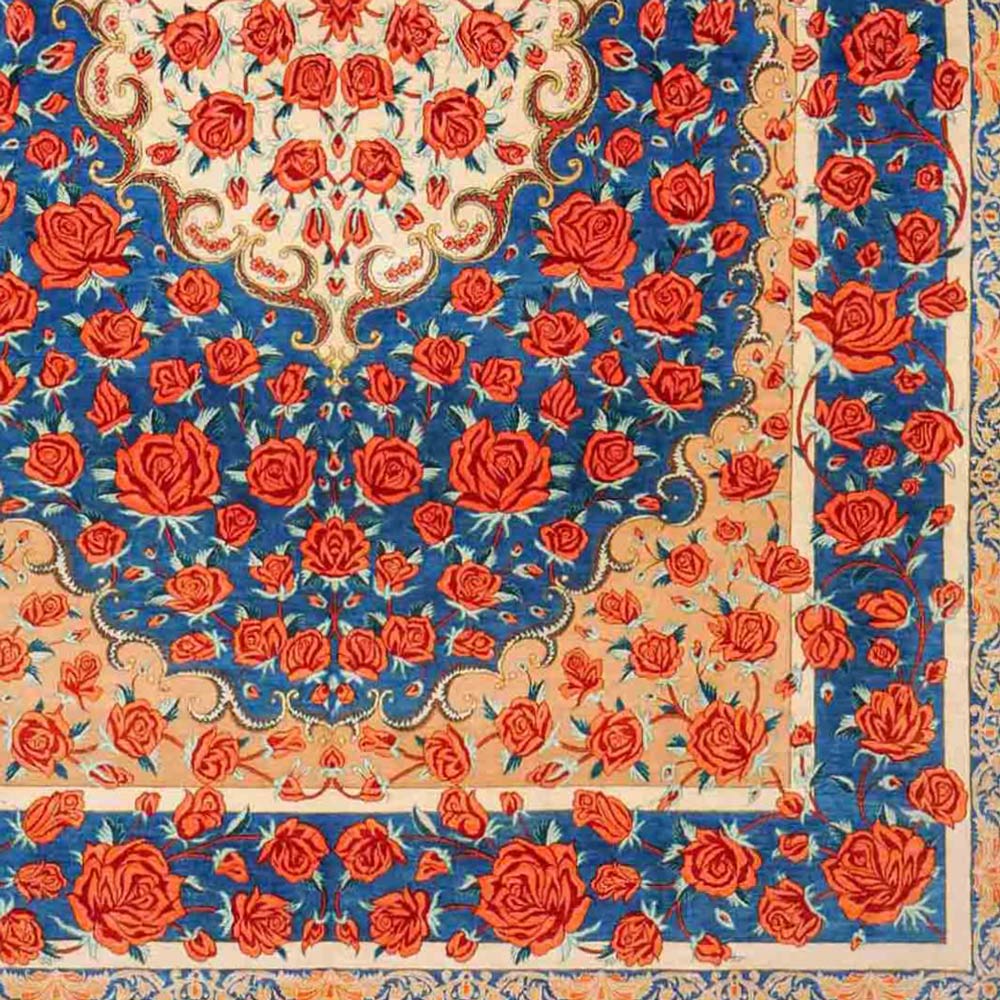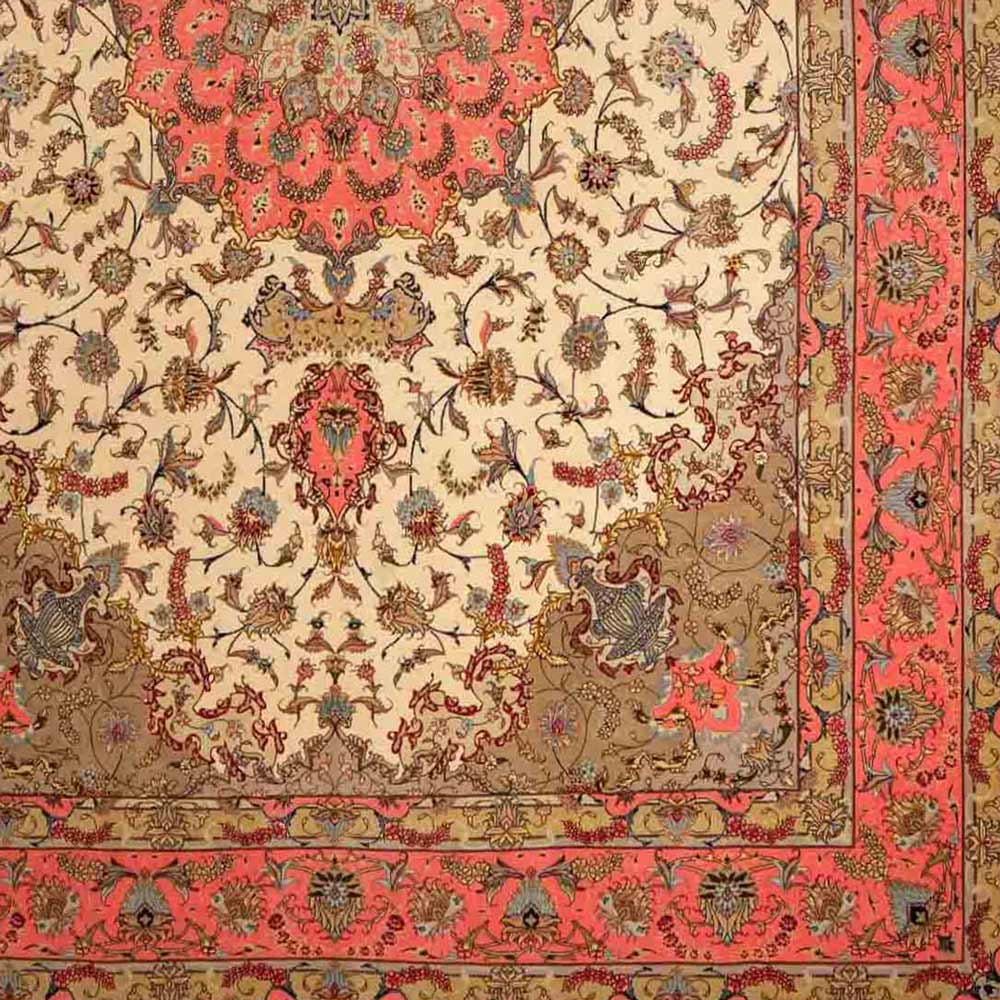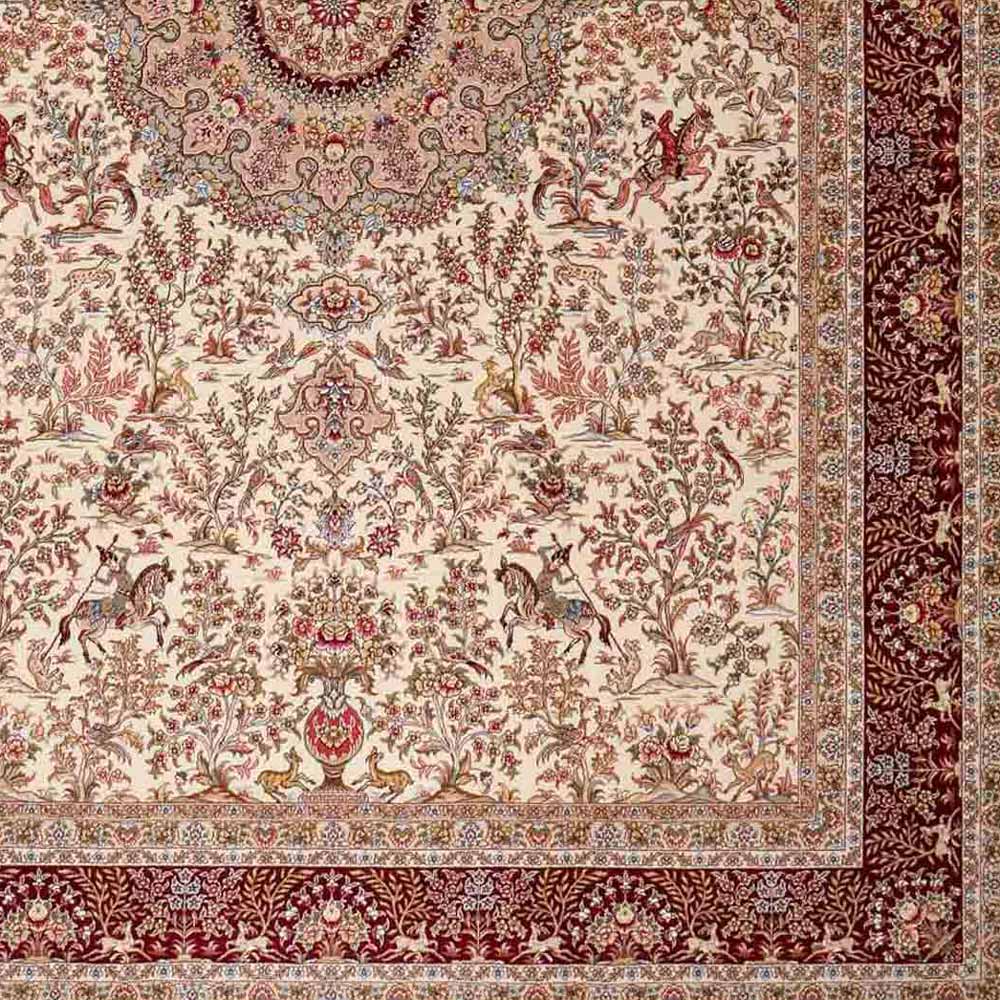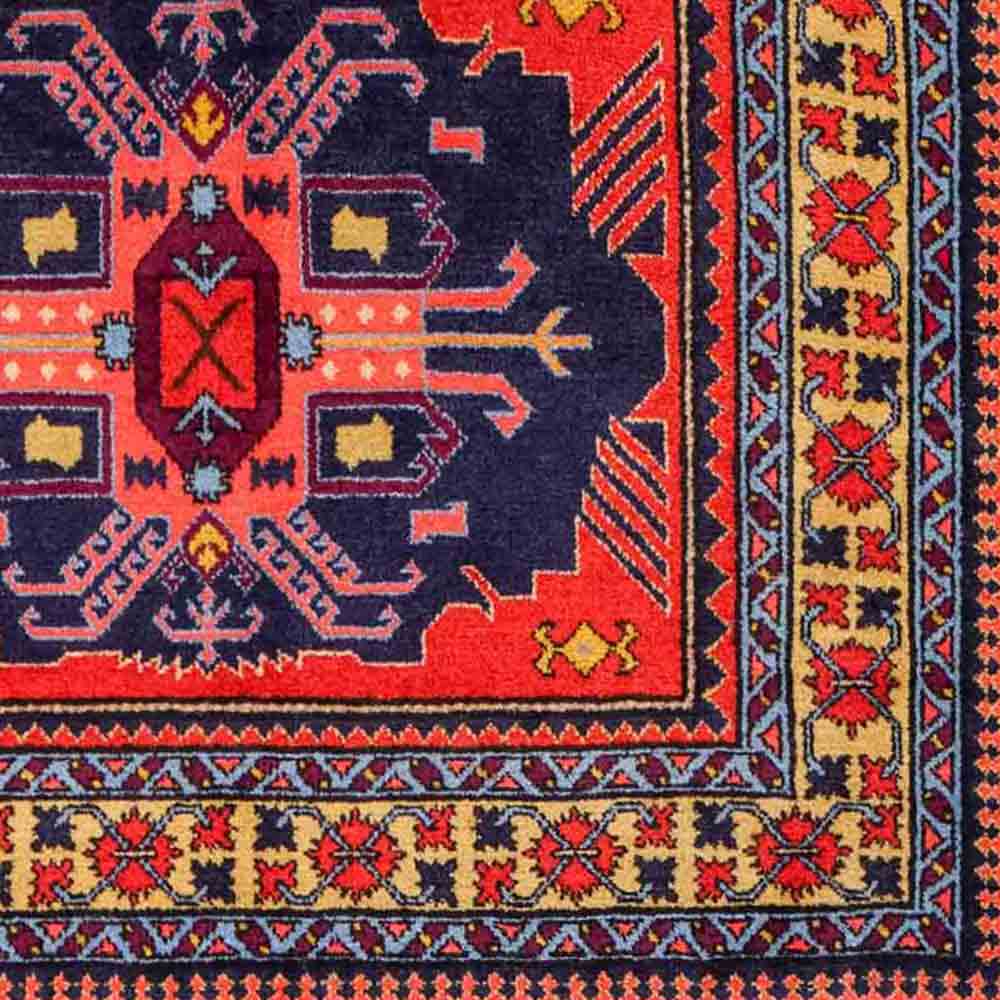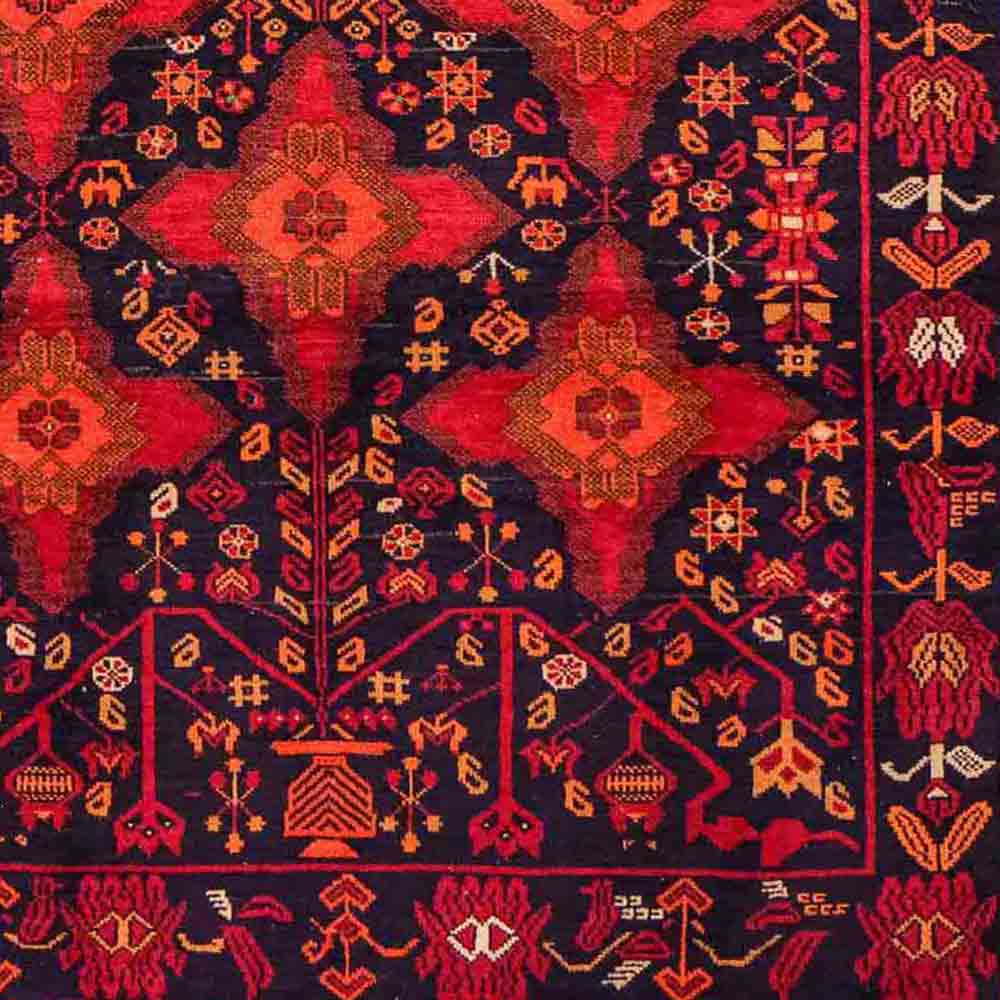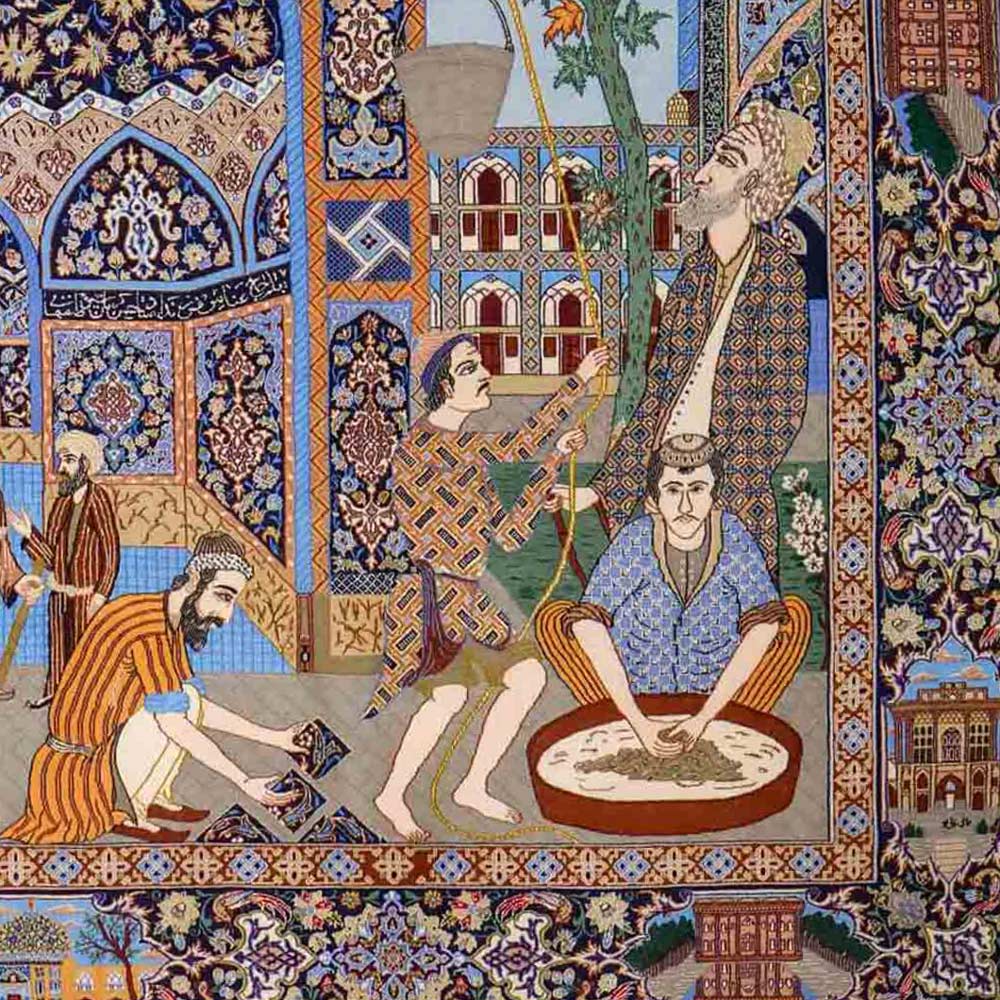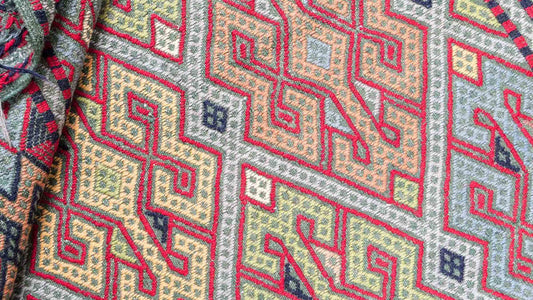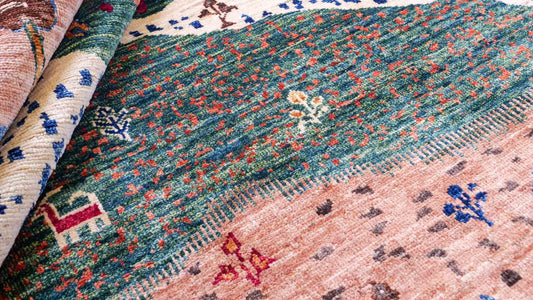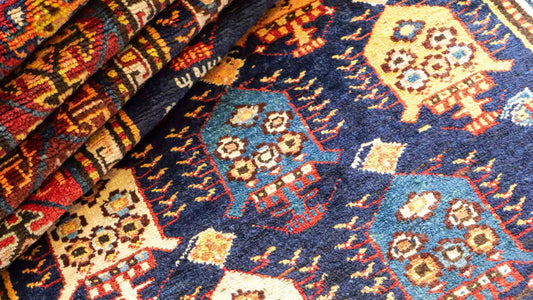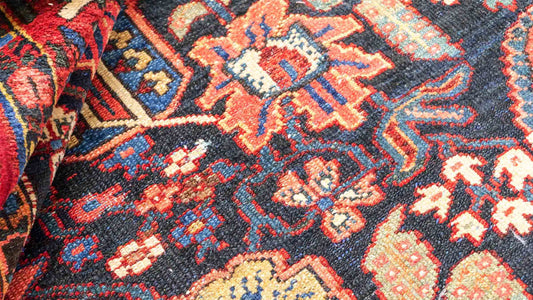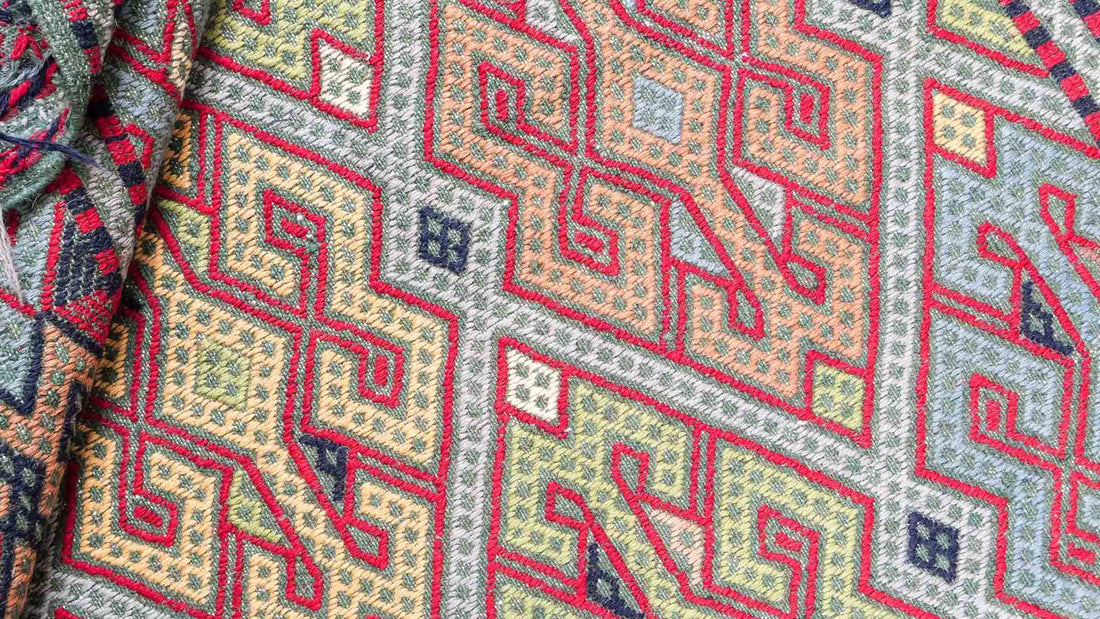
Kilim
Daniel KhademiDive into the fascinating world of kilim rugs – traditional masterpieces of flat weaving, celebrated for their unique patterns, symbolic colors, and deep cultural roots. Learn everything about their origins, diversity, production processes, designs, and discover how to recognize authentic craftsmanship as an enrichment for your home and as an investment piece.
Kilims: Key Facts at a Glance
- Origin: Central Asia, Turkey (Anatolia), Morocco, Iran/Persia, Caucasus, Afghanistan, Pakistan & India
- Material: High-quality sheep’s wool, cotton, more rarely silk; natural dyes
- Weaving Technique: Hand-woven flatweave (no pile, no knots)
- Patterns & Motifs: Abstract, geometric, tribal, stylized animals & plants, medallions, rhombuses, borders
- Color Palette: Rich red, indigo blue, warm earth tones, shades of green; traditionally plant-dyed
- Special Features: Reversible, lightweight, portable, used as floor rug, wall hanging, throw, cushion cover, etc.
- Meaning: Bearers of cultural symbolism & history, expressions of artisan skill, sustainability, hand-made one-of-a-kind pieces
- Style Diversity: From nomadic-rustic and ethnic/boho-chic to modern-minimalist and classic-elegant
Explore our curated collection of exclusive hand-woven Kilims —find your one-of-a-kind masterpiece today!
Origin & History
The Journey of the Kilim through Time & Continents
Kilims have their roots in the nomadic cultures of Central Asia, Anatolia, and the Middle East. For centuries, they have been part of the daily life of these peoples – first as utilitarian objects, later as prestigious decorative items. Kilims are produced from Morocco through Turkey to Iran, the Caucasus, Afghanistan, Pakistan, and India. Historically, their craft spread through trade and cultural exchange across much of the world. Their patterns and styles reflect regional traditions and contribute to the preservation of cultural identity.
Symbolism & Cultural Value
The Kilim Rug as a Storyteller
Kilims embody the cultural identities of their countries of origin. Their designs and color palettes tell stories of tradition, belief, and daily life of the people who crafted them. Symbols woven into kilims have deep meanings: they may represent protection, fertility, or good fortune. As cultural artifacts, they carry the artisanal heritage across generations. These rugs merge artistic expressiveness with practical functionality and are valuable cultural assets that have found their way into homes worldwide.
Manufacturing Process
The Art of Kilim Flat Weaving
- Material Selection: Premium sheep’s wool, cotton, more rarely silk; regionally sourced plant dyes
- Spinning & Dyeing: Hand-spun, using traditional methods and natural dyes (e.g., indigo, pomegranate, walnut)
- Weaving: Hand-woven on traditional looms (horizontal/vertical); characteristic flat weave, no pile
- Patterns: Numerous motifs, classically woven or improvised; selvages and edges are hand-finished
- Finishing & Control: Overcasting, turning, inspecting knots, final cleaning – each kilim is unique
The Difference from Classic Persian & Oriental Rugs
Kilim = flat-woven, usable on both sides, no knots or pile, lighter, more flexible, and more versatile than classic knotted rugs.
Kilim Variants & Regional Differences – From Anatolia to Persia
- Anatolian Kilims: Vibrant colors, geometric tribal patterns, rhombuses, göz (eye motifs)
- Caucasian Kilims: Fine vegetal motifs, floral borders, many zigzag lines
- Persian Kilims: Stylized-symbolic, medallions, plant tendrils
- Central Asian/Kyrgyz Kilims: Complex, color-intensive ornaments, strong symbolism
- Moroccan Kilims: Diamonds, simple geometry, warm colors
Designs, Patterns & Color World of Kilim Rugs
- Geometric Shapes: Rhombuses, triangles, stripes, medallions
- Flora & Fauna: Stylized (e.g., tree of life, animal figures)
- Color Palette: Red, blue, orange, green, yellow, earthy tones – always plant-dyed
- Symbolism: Each motif (e.g., wolf’s mouth, key of fortune, mother goddess) carries a story or protective function
Handmade vs Machine-made Kilims
When weighing up between handmade and machine-made kilims, authenticity and eco-friendliness take center stage. Handwoven kilims offer unmatched quality and durability. They use natural materials and support local handicraft communities, making them a more sustainable choice. Although they are more costly to purchase, they offer a unique quality and individuality that machine-made rugs cannot achieve. An investment in a handmade kilim is a rewarding choice for anyone who values individuality and ethics.
Checklist: How to Recognize a Genuine Handwoven Kilim
- Almost identical patterns on both sides (for authentic flatweaves) ✔
- Natural colors, not overly bright chemical ones ✔
- Typical fringed ends, sturdy selvages ✔
- Certificate/provenance recommended ✔
- No unpleasant odor (a sign of natural dyeing) ✔
- Unique: small irregularities are typical ✔
Practical Tips for Choosing the Right Kilim
When choosing a kilim rug, several considerations come into play:
- Size and Placement: Ensure you’ve measured your space so you can pick a rug in proper proportion. A kilim sized to your room enhances the feel and fits the architecture.
- Color Harmony: Look for designs and colors that fit your interior’s color scheme for a cohesive, aesthetic look.
- Care and Cleaning: Regular vacuuming and professional cleanings every few years help maintain the rug’s beauty and longevity.
- Versatile Use: Use kilims creatively as wall hangings or as throws for furniture to add dimension and texture to your space.
Home Ideas: How to Use Kilims Harmoniously in Your Home
- Boho or Ethno Style: As a runner, large rug, or wall hanging for warm accents
- Modern & Minimal: In bright, clean spaces as a colorful statement piece
- Japandi & Scandi Design: Subtle, natural kilims with sleek lines and raw materials
- Bedroom or Hallway: At the bedside, as a decorative runner or cushion cover
- Multifunctional: Draped over furniture, on benches or as a picnic blanket
Request a personal style & purchase consultation for Kilim rugs now!
Care & Preservation of Kilims
To ensure your kilim brings you joy for a lifetime, we recommend:
- Carefully vacuum regularly (no rotating brushes, do not beat)
- Gently blot stains immediately
- Avoid direct sunlight; occasionally rotate the rug
- Professional cleaning is recommended every 1–2 years
FAQ – Frequently Asked Questions About Kilim Rugs
How do you recognize a genuine handwoven kilim?
► By the flat weave with no pile, natural wool fibers, traditional fringes, naturally-matte colors, and unique character.
Are kilims durable and practical for everyday use?
► Yes! Quality kilims are robust, easy to care for and versatile – ideal even for families and pet owners.
How do I take proper care of a kilim?
► Vacuum carefully, do not use aggressive – especially not chemical – agents, and avoid direct sunlight. Regular professional cleaning will maintain their beauty and value. More in our blog post: *How to Care for Hand-Knotted Rugs*
Machine-made or handmade – which is better?
► Handwoven kilims offer more authenticity, longevity, and individuality than machine-made.
Where can I buy handwoven kilim rugs?
► From specialist dealers and online shops—always check for certificates of authenticity and expert advice. At JUPITER Intl, every hand-knotted, hand-tufted, and handwoven rug comes with a Certificate of Authenticity.
Conclusion: Kilim – The Artistic Statement for Your Home
Kilims are much more than just floor coverings: they represent craftsmanship, culture, and sustainable style. Whether in traditional or modern settings, an authentic kilim brings a piece of world culture, history, and creative inspiration into your home.
Explore our curated collection of exclusive hand-woven Kilims —find your one-of-a-kind masterpiece today!
Related blogs & blog posts you might also be interested in:
→ Design Classics, Countries of Origin, Carpet Materials, Carpet Guide

